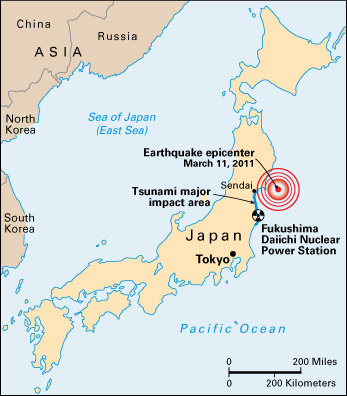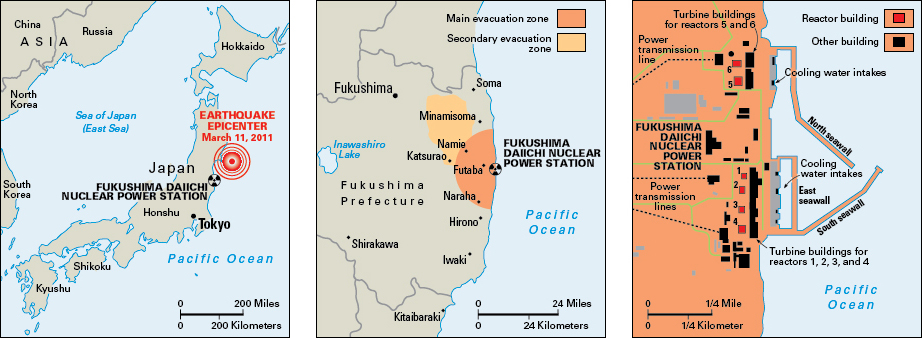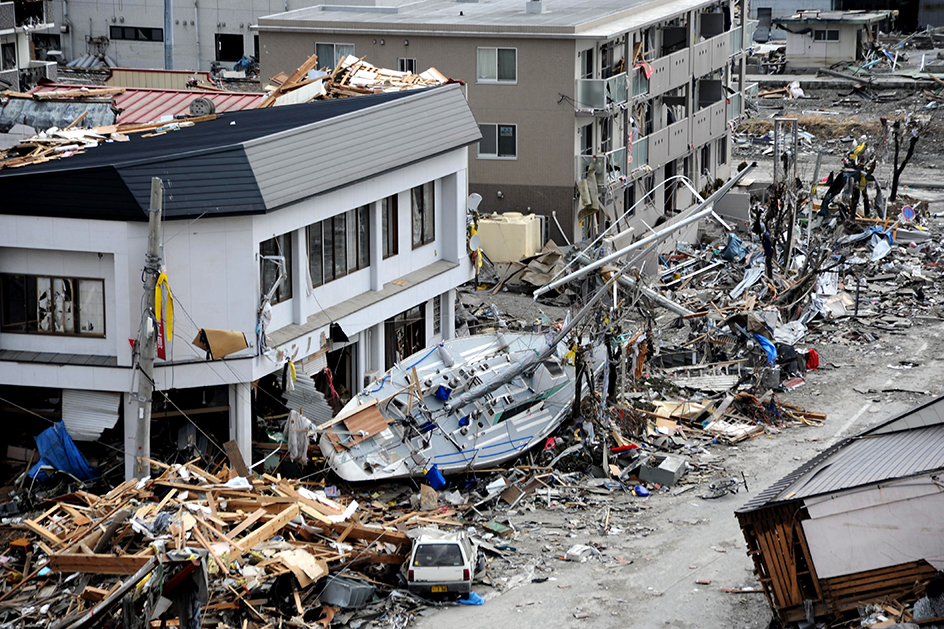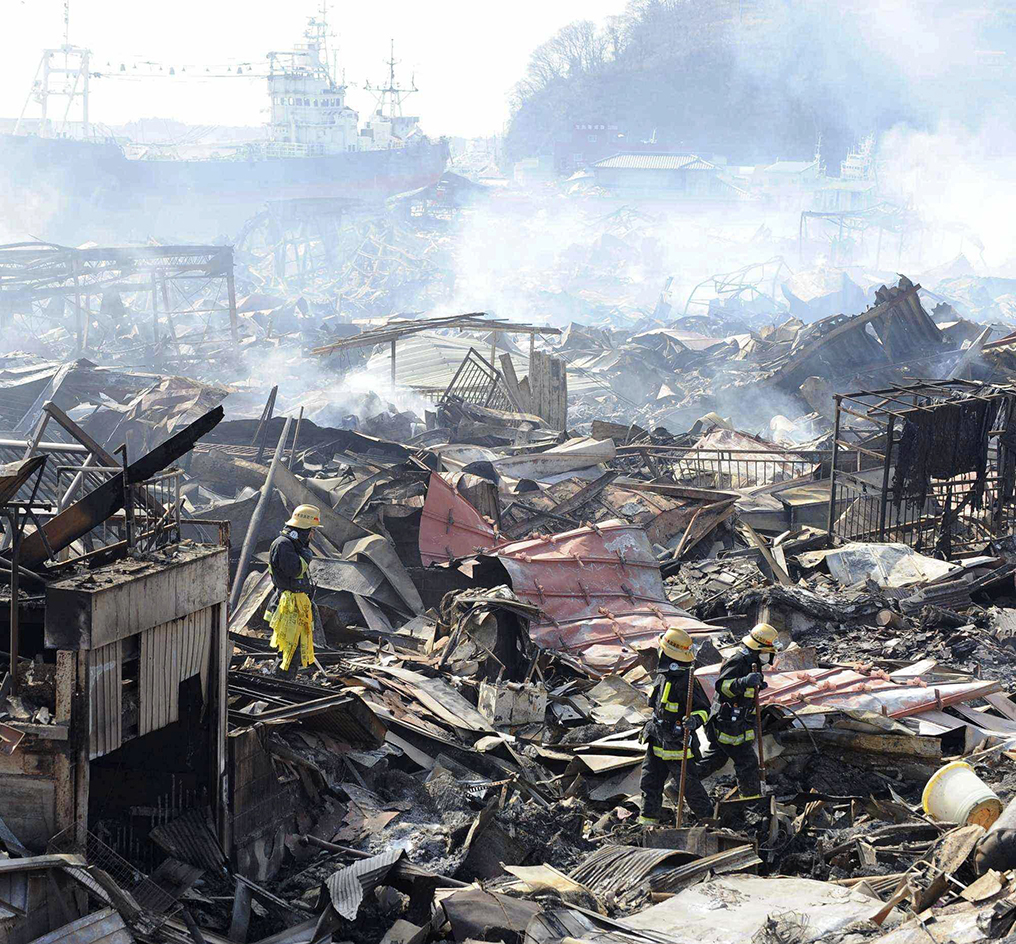Japan earthquake and tsunami of 2011 was one of the worst disasters in Japan’s history. On March 11, 2011, a powerful earthquake occurred off Honshu, Japan’s largest island. The earthquake caused a tsunami (series of powerful ocean waves) that caused widespread destruction on land. Nearly 15,900 people were killed, and more than 2,500 others were missing. Hundreds of thousands of people were left homeless. The disaster also sparked emergencies at the Fukushima Daiichi Nuclear Power Station in Fukushima Prefecture as well as at several other facilities.
Loading the player...Honshu tsunami in the Pacific Ocean
Earthquake and tsunami.
The earthquake struck at 2:46 p.m. local time on March 11. Its focus or hypocenter—the point deep in Earth where it originated—was about 19.9 miles (32 kilometers) below the ocean surface. The epicenter—the point on Earth’s surface directly above the focus—was in the Pacific Ocean, about 80 miles (129 kilometers) east of the city of Sendai. This area lies along the border between two tectonic plates—the North American Plate and the Pacific Plate. Tectonic plates are large, rigid sections of Earth’s rocky outer shell. The slow movements of the plates in relation to one another can cause earthquakes.

The earthquake was the strongest to hit Japan in at least 140 years. According to the United States Geological Survey, it had a magnitude of 9.1. Magnitude is a measurement of earthquake strength based on ground motion. Energy from the earthquake jolted the seabed upward, displacing huge amounts of water and forming the waves of the tsunami. The waves moved through the ocean, away from the epicenter. Waves more than 30 feet (9 meters) high crashed onto Honshu. Seawater flooded farms and cities. Buildings, vehicles, and other debris were scattered for miles.
Nuclear emergency.

The earthquake and tsunami caused emergencies at several nuclear power stations along Honshu’s eastern coast. In particular, water from the tsunami damaged cooling systems at the Fukushima Daiichi Nuclear Power Station. Without a working cooling system, nuclear fuel at three of the station’s reactors overheated and spread dangerous amounts of radioactivity into the surroundings. In the months following the earthquake and tsunami, plant operators tried to contain the radioactivity and cool the nuclear fuel.
Recovery efforts and aftermath.
The earthquake and tsunami destroyed or damaged tens of thousands of buildings and large areas of farmland. In the days following the disaster, many governments and international organizations offered assistance to the Japanese government. Over the year following the disaster, all of Japan’s nuclear power plants shut down for maintenance and safety inspections.

The Japanese government appointed a panel of experts to investigate the circumstances surrounding the disaster. The panel released its report in July 2012. In the report, the experts stated that, although the natural disasters triggered the nuclear disaster, the nuclear disaster could have been prevented. The experts placed blame for the scale of the disaster on the Japanese government, nuclear regulators, and Tokyo Electric Power Company (Tepco), which owns the Fukushima power station. The report accused regulators of failing to adopt global nuclear safety standards. The panel also faulted government and Tepco officials for failing to take steps to prevent such a disaster, as well as for mishandling the disaster after it had occurred.

In the years following the disaster, Tepco struggled to maintain the Fukushima plant. On several occasions, officials discovered large amounts of water contaminated with radioactive material leaking from the plant’s cooling and storage systems. Studies found that deadly levels of radiation were still present in some areas of the plant.
